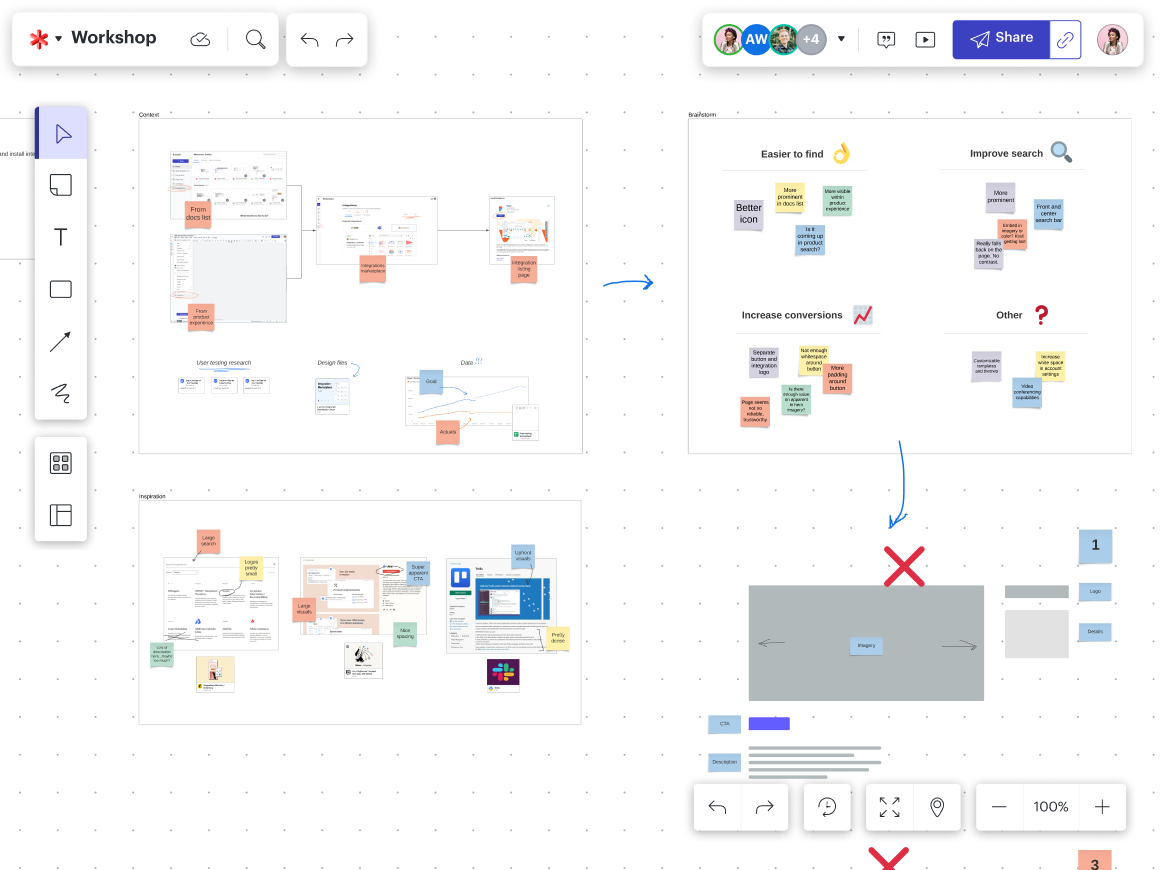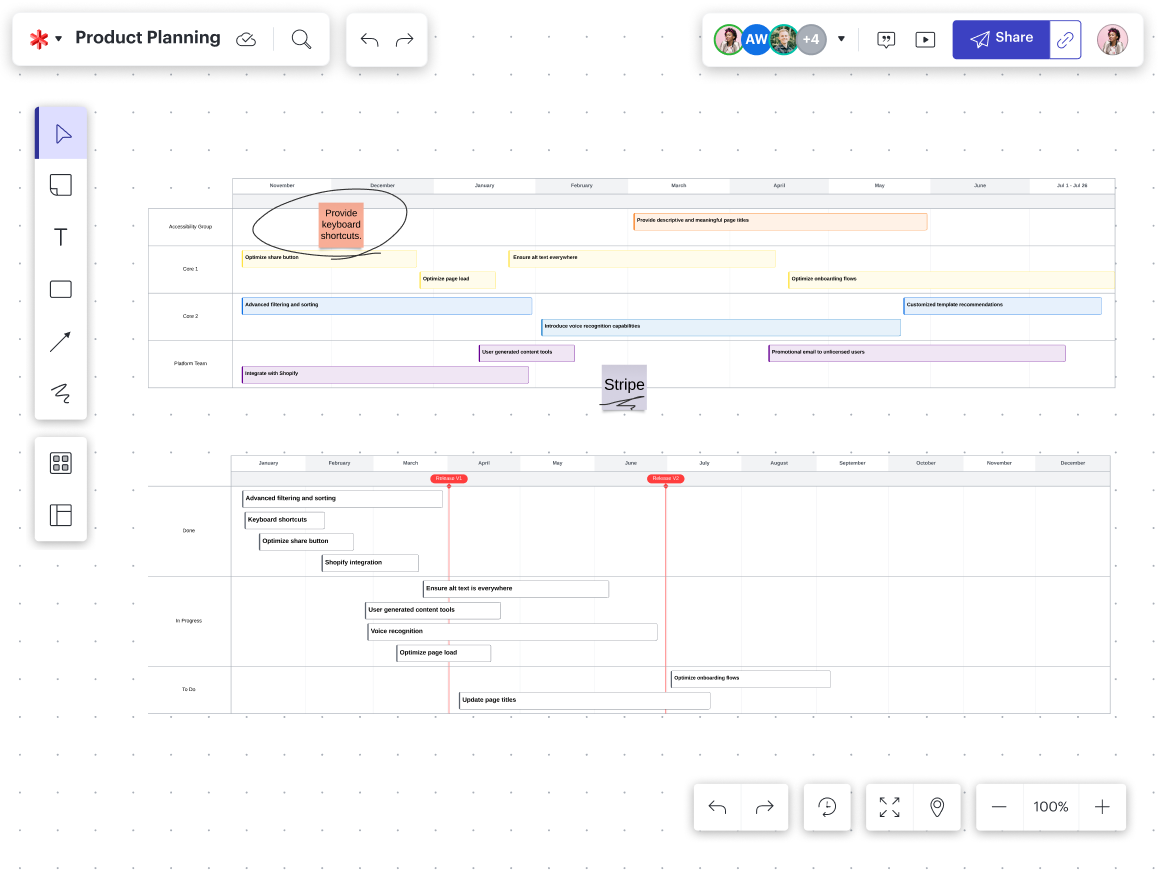At Lucid, our R&D teams know first-hand that launching new products and features requires thorough preparation, clear communication, and plenty of cross-departmental collaboration.
Here are just a few powerful ways we’ve found that Lucid helps in the product planning process:
#1: Centralize product requirement information
With Lucid, you can easily capture product requirements from other departments or from your customers in one central space. We love the product requirement feedback template for this!
Within one board, you can work together to record everything from user personas to goals and success metrics. Take advantage of Facilitator Tools if you’re working live, or share the board asynchronously using Frames and Paths to direct your collaborators’ attention.

#2: Visualize the release timeline
We also recommend using Lucid to visualize the timeline of your release and instantly make the entire project feel more manageable and make executing key tasks easier.
As a bonus, you can convert action items in Lucid directly into Jira issues to streamline work. (Hint: We integrate with many task management systems—check out the full integrations list!)

#3: Align on the user experience
Another great way to use Lucid during product planning is to map out the user experience using journey maps, personas, and interaction flows.
Here’s our favorite part: You can use Visual Activities to capture everyone’s feedback as you build out experiences and designs.

How are you using Lucid for product planning? Tell us in the comments below!